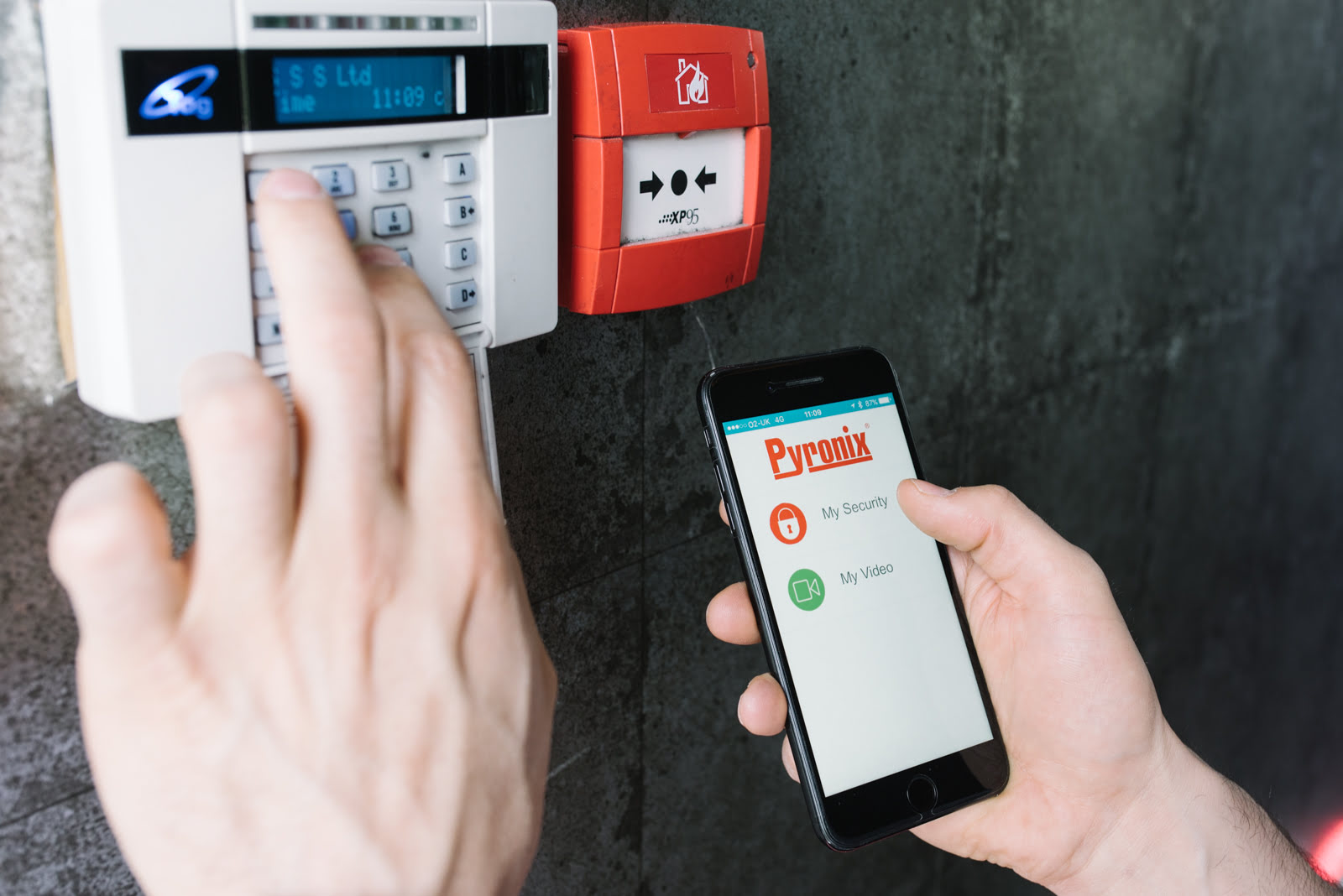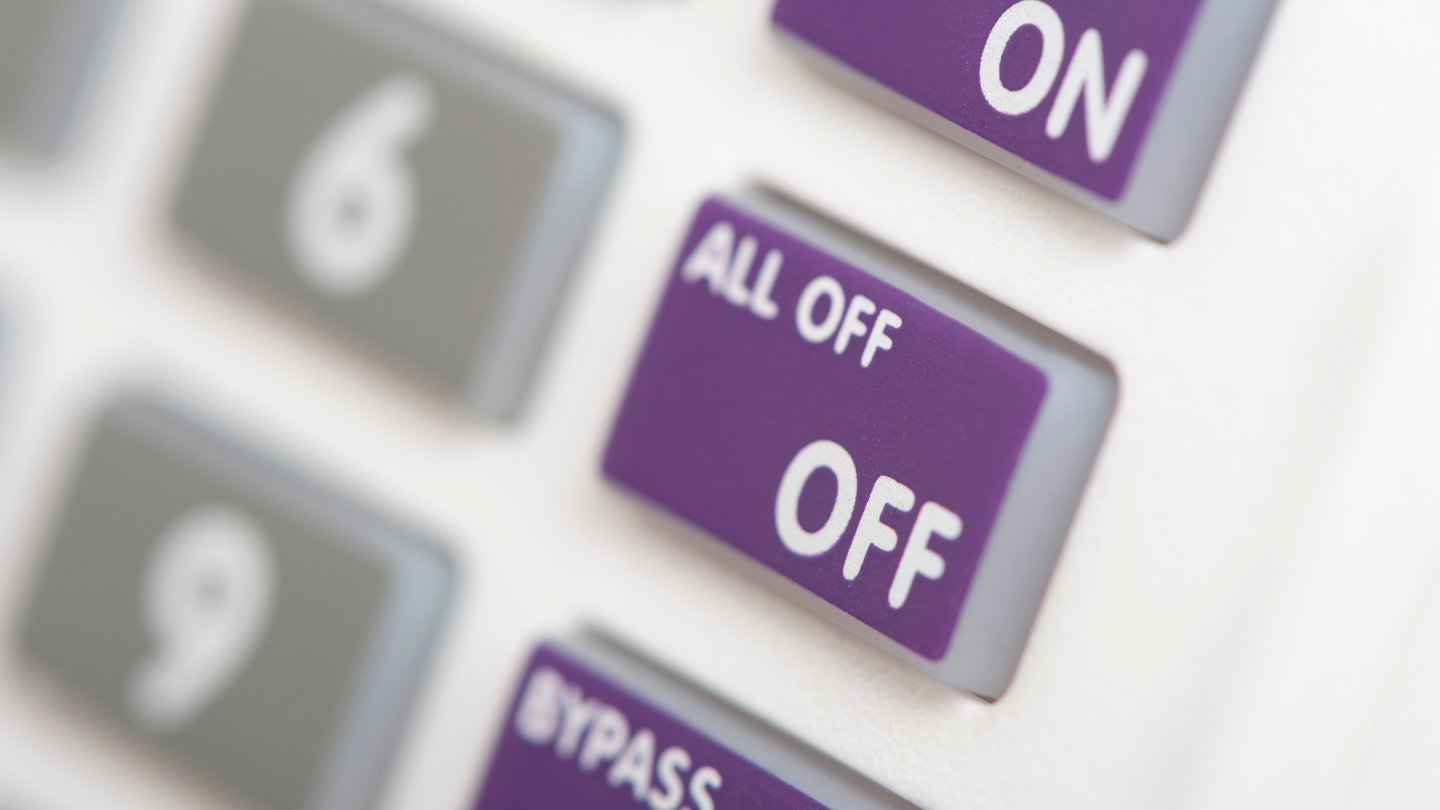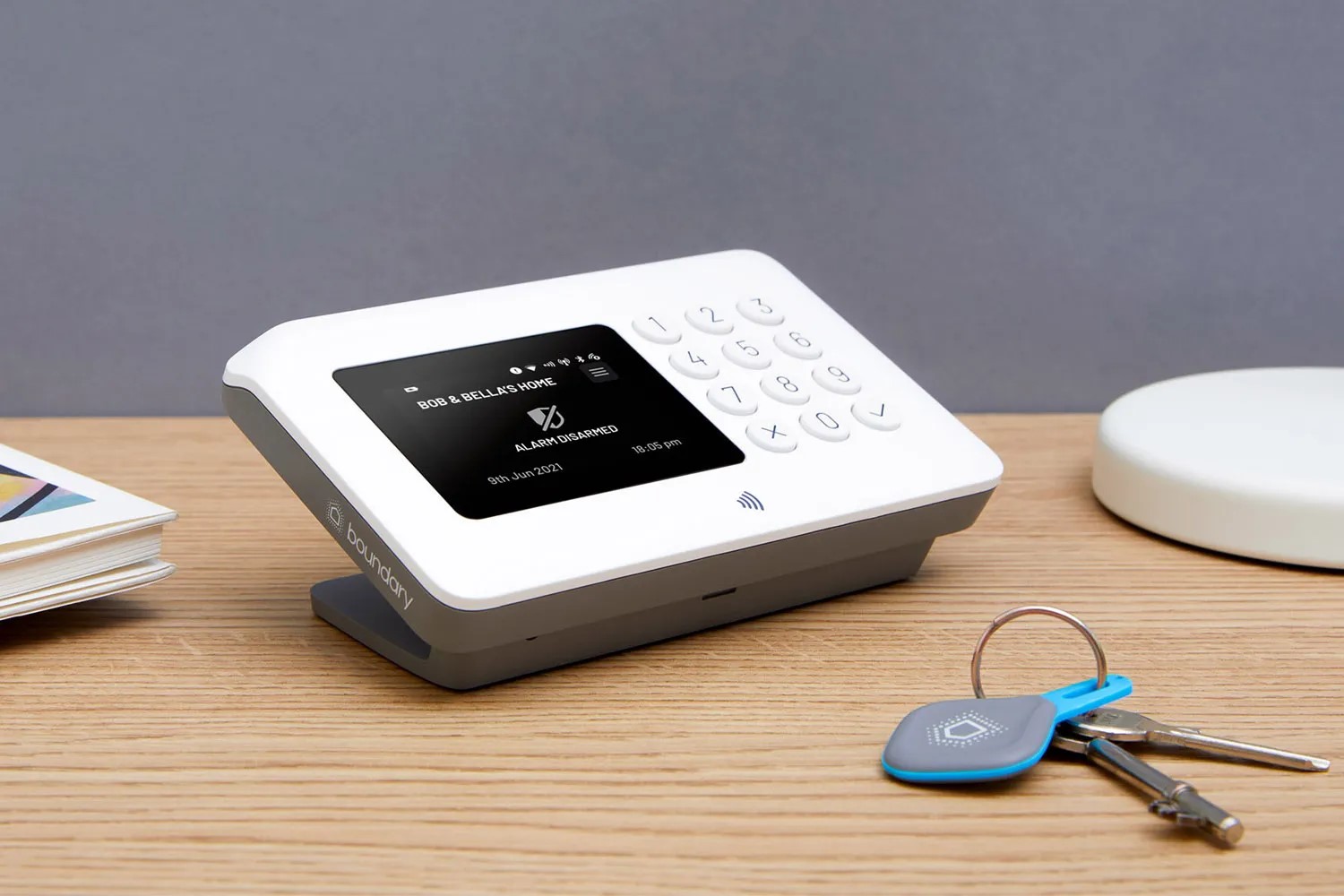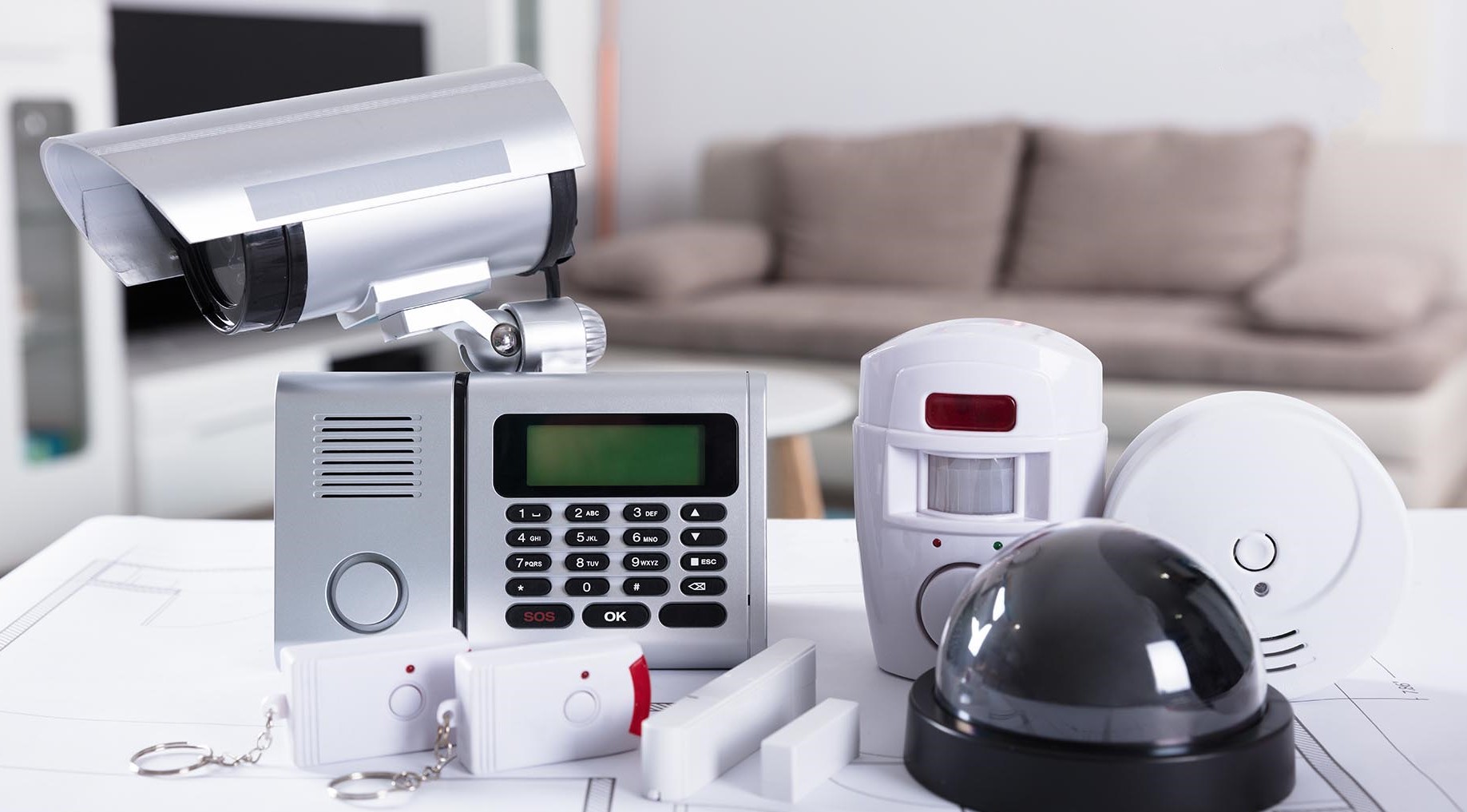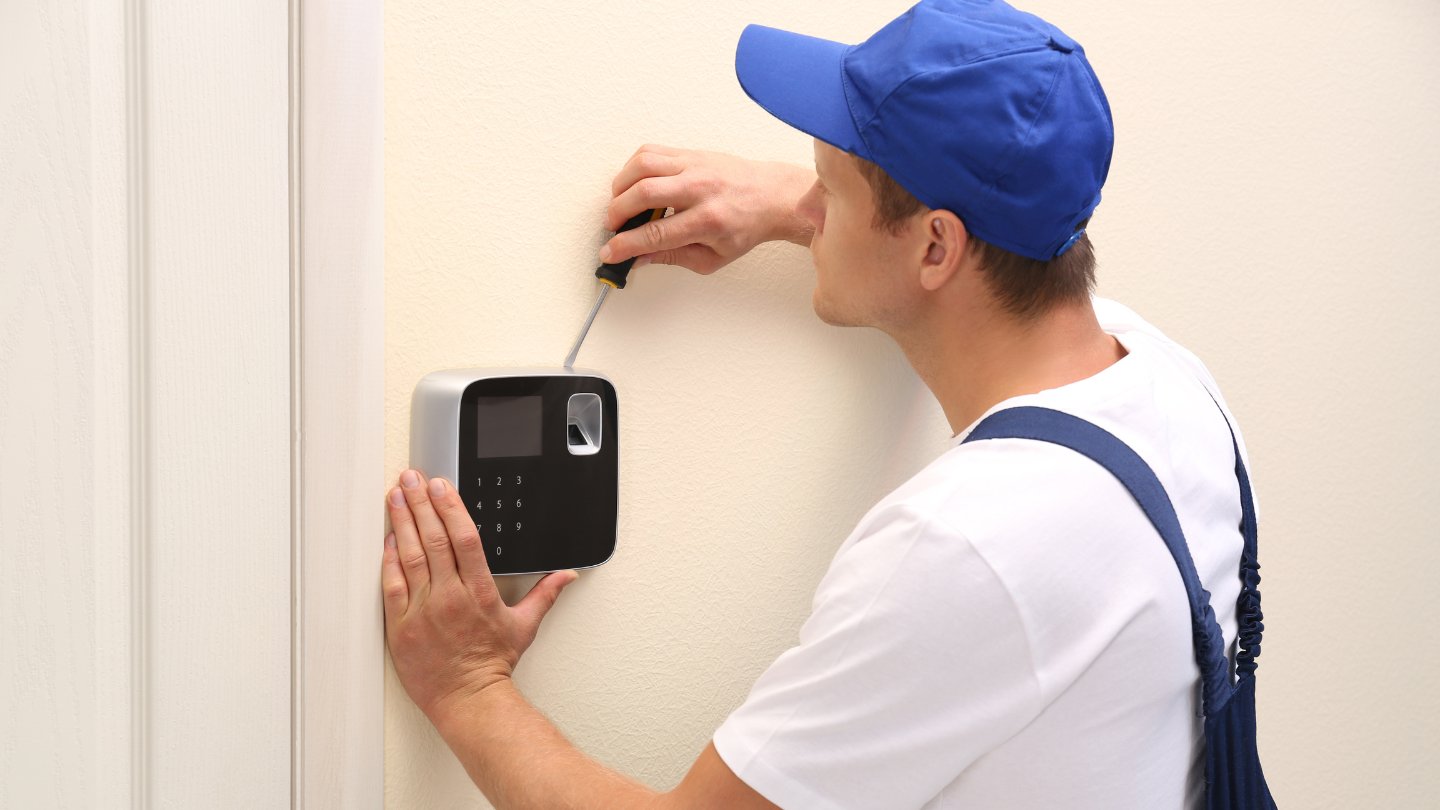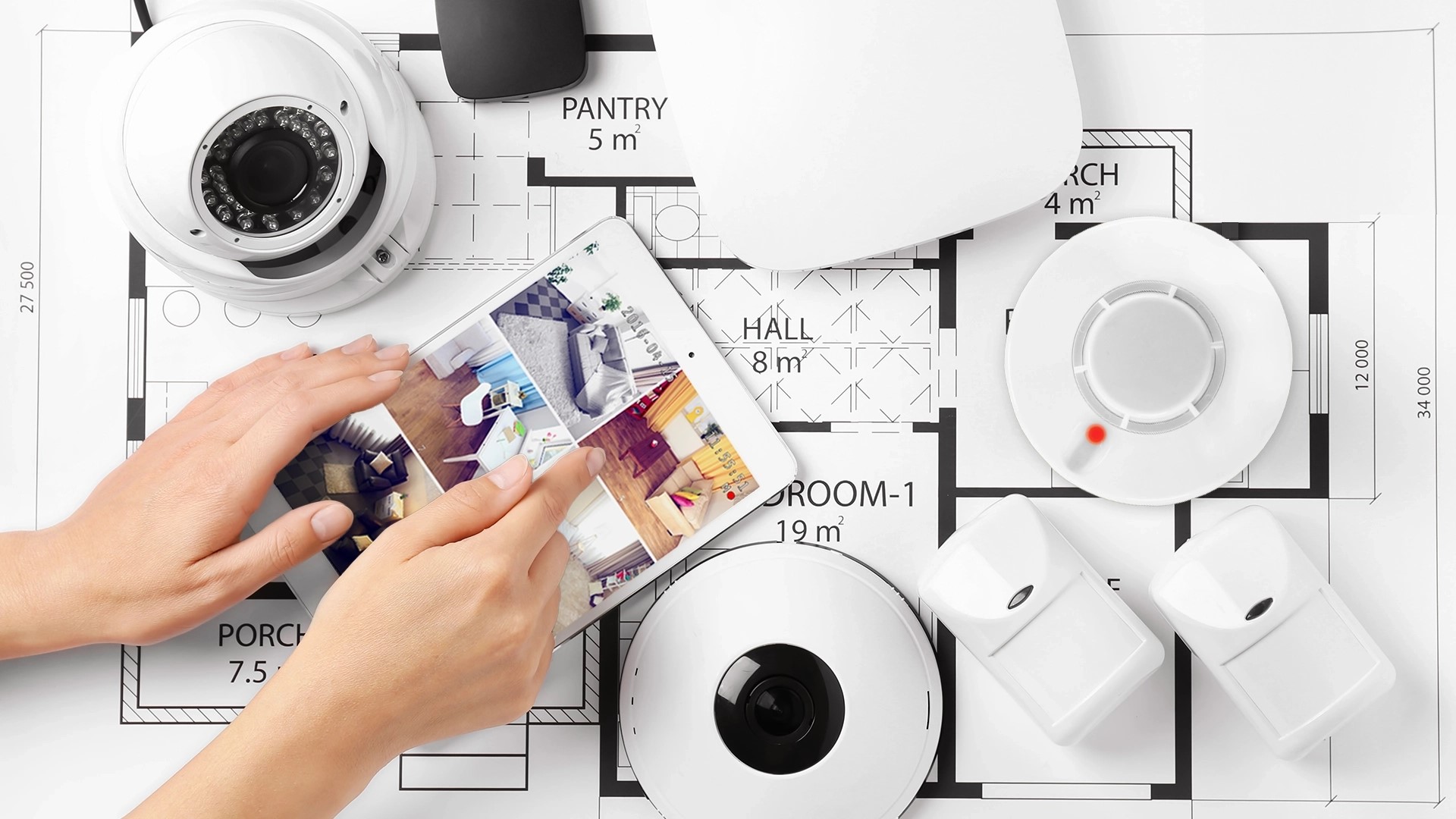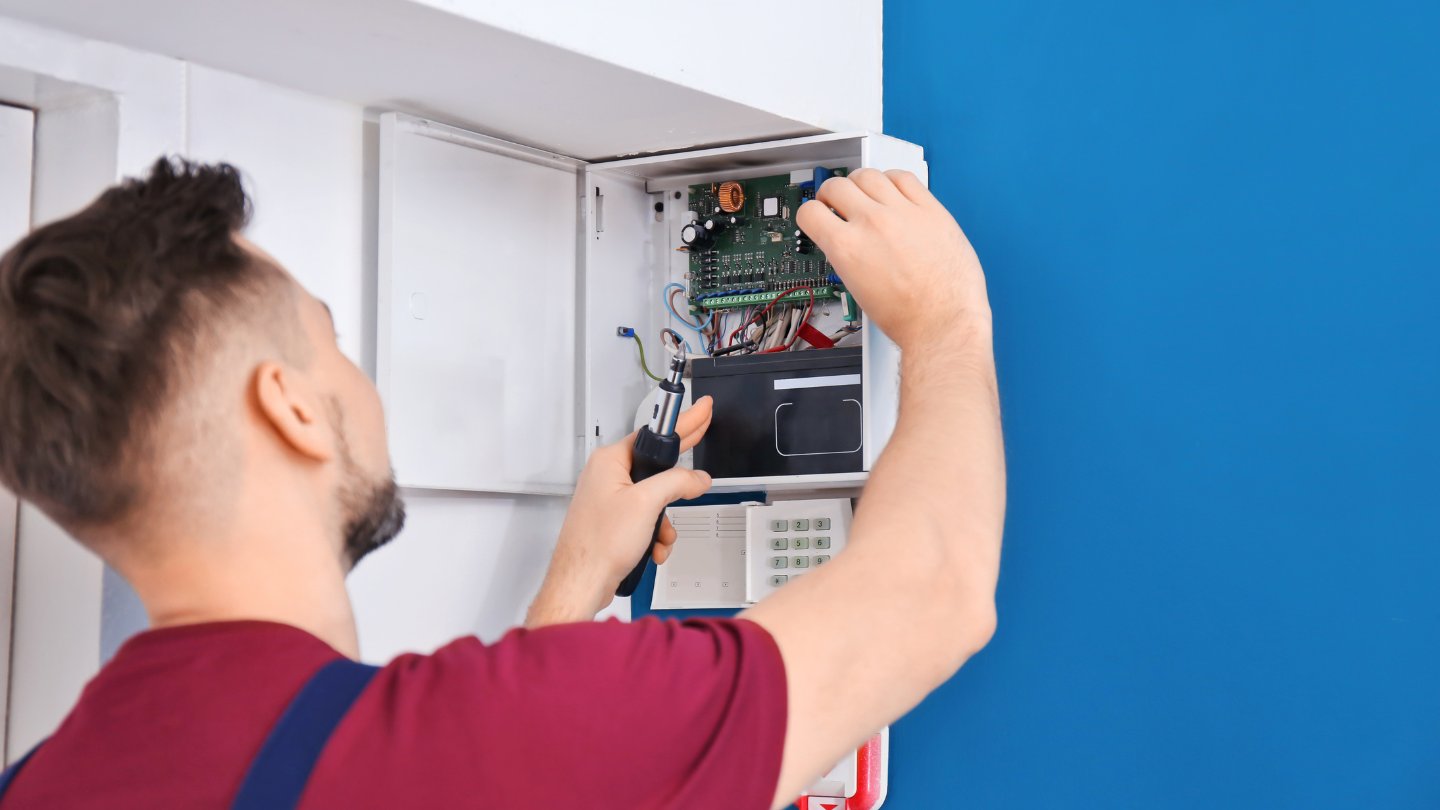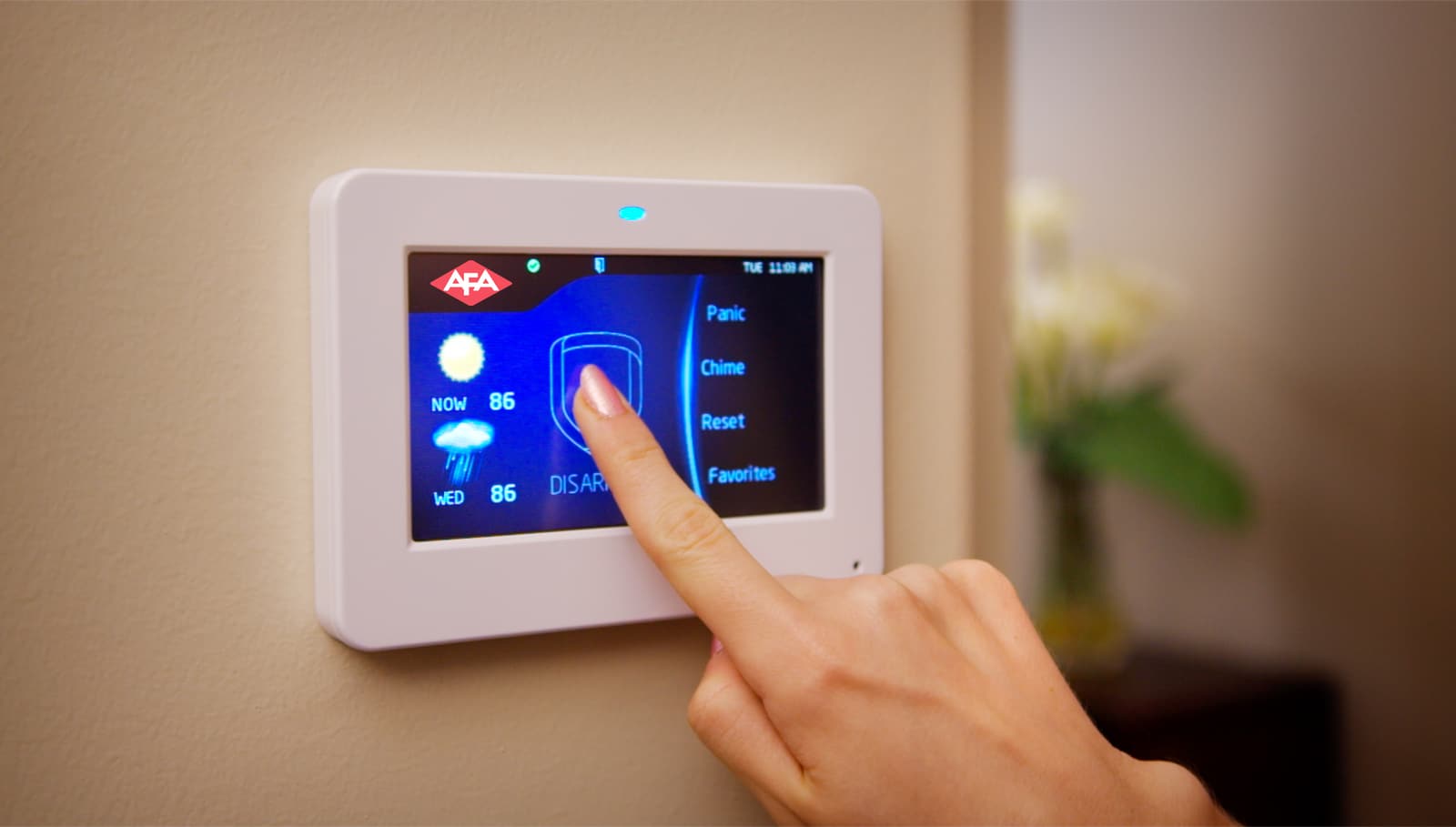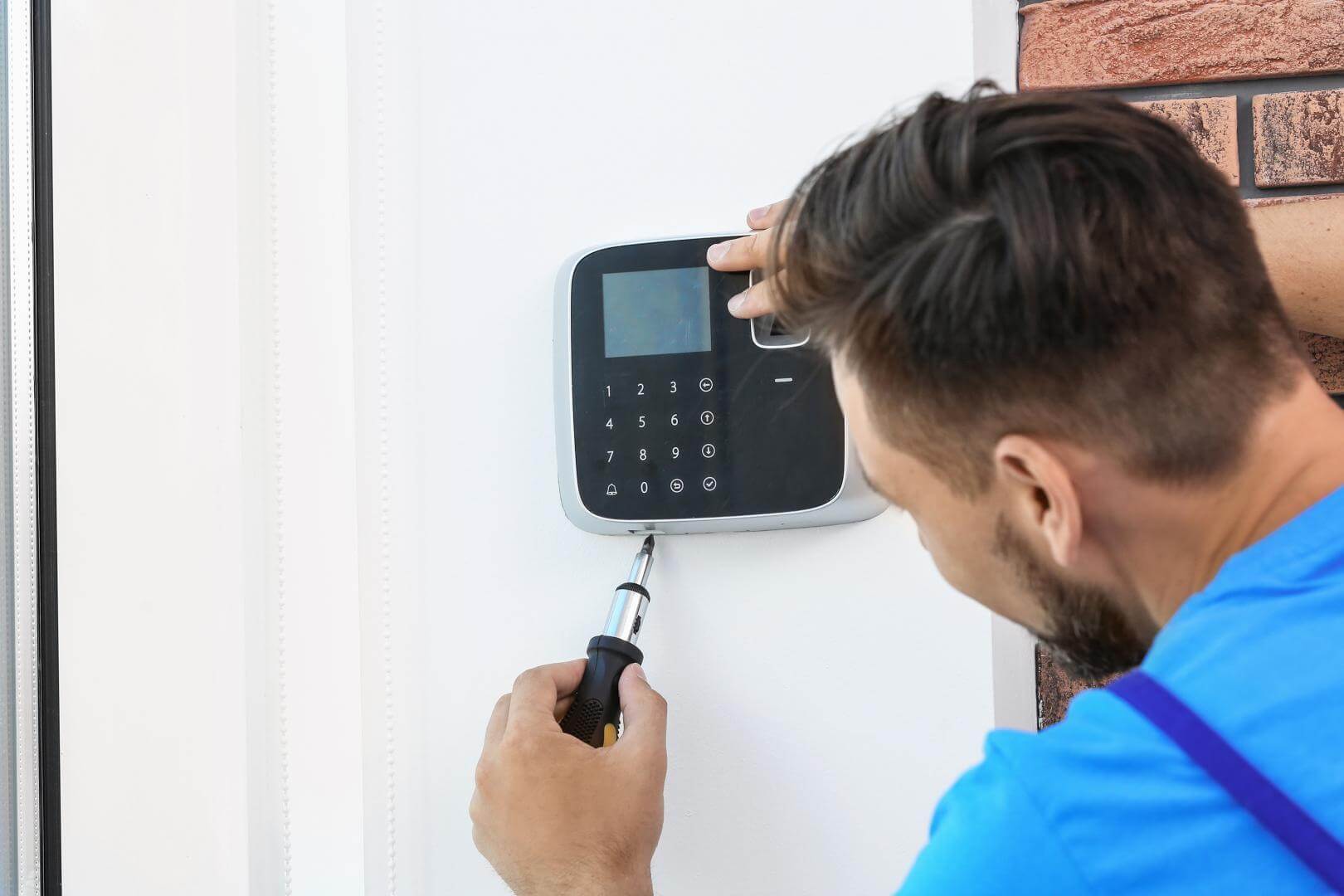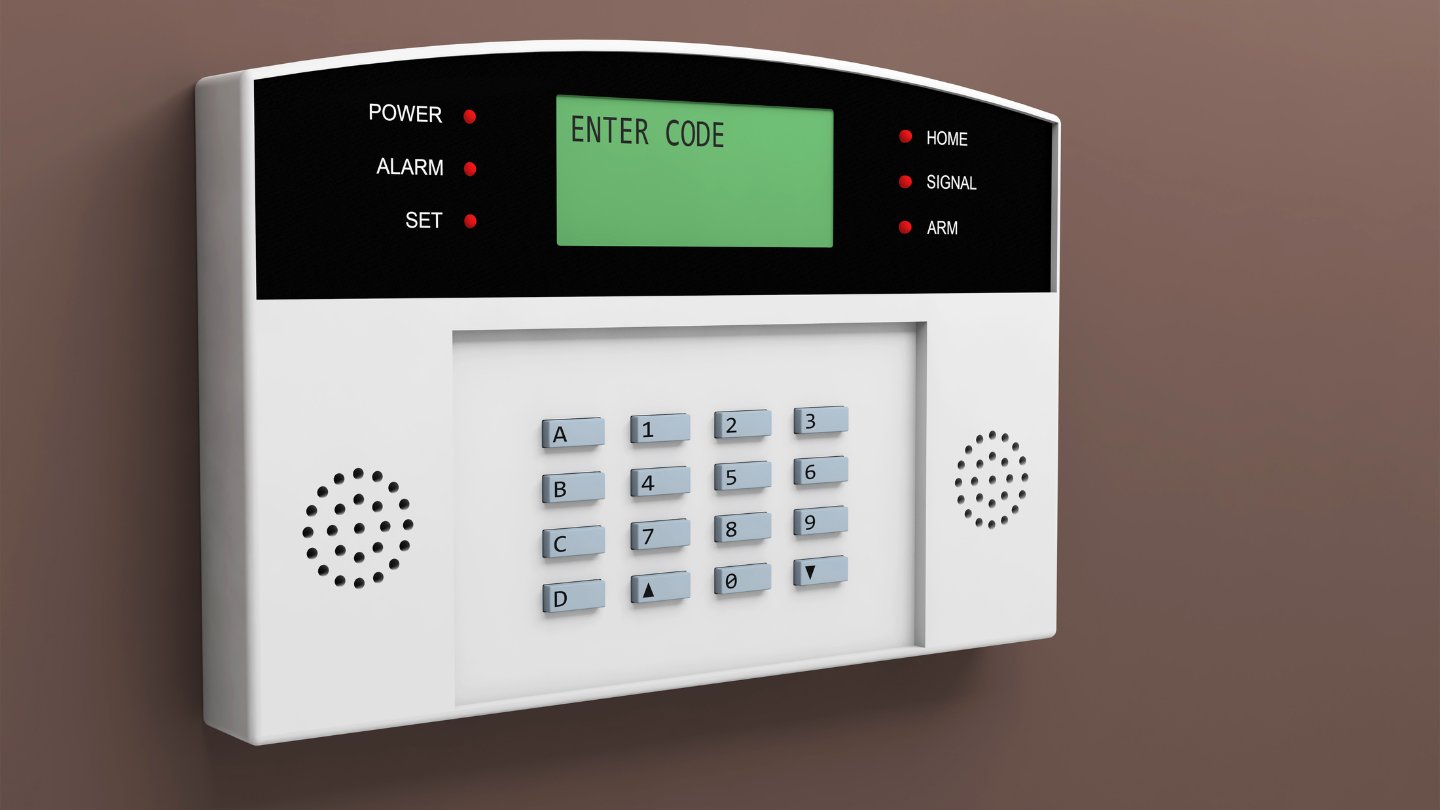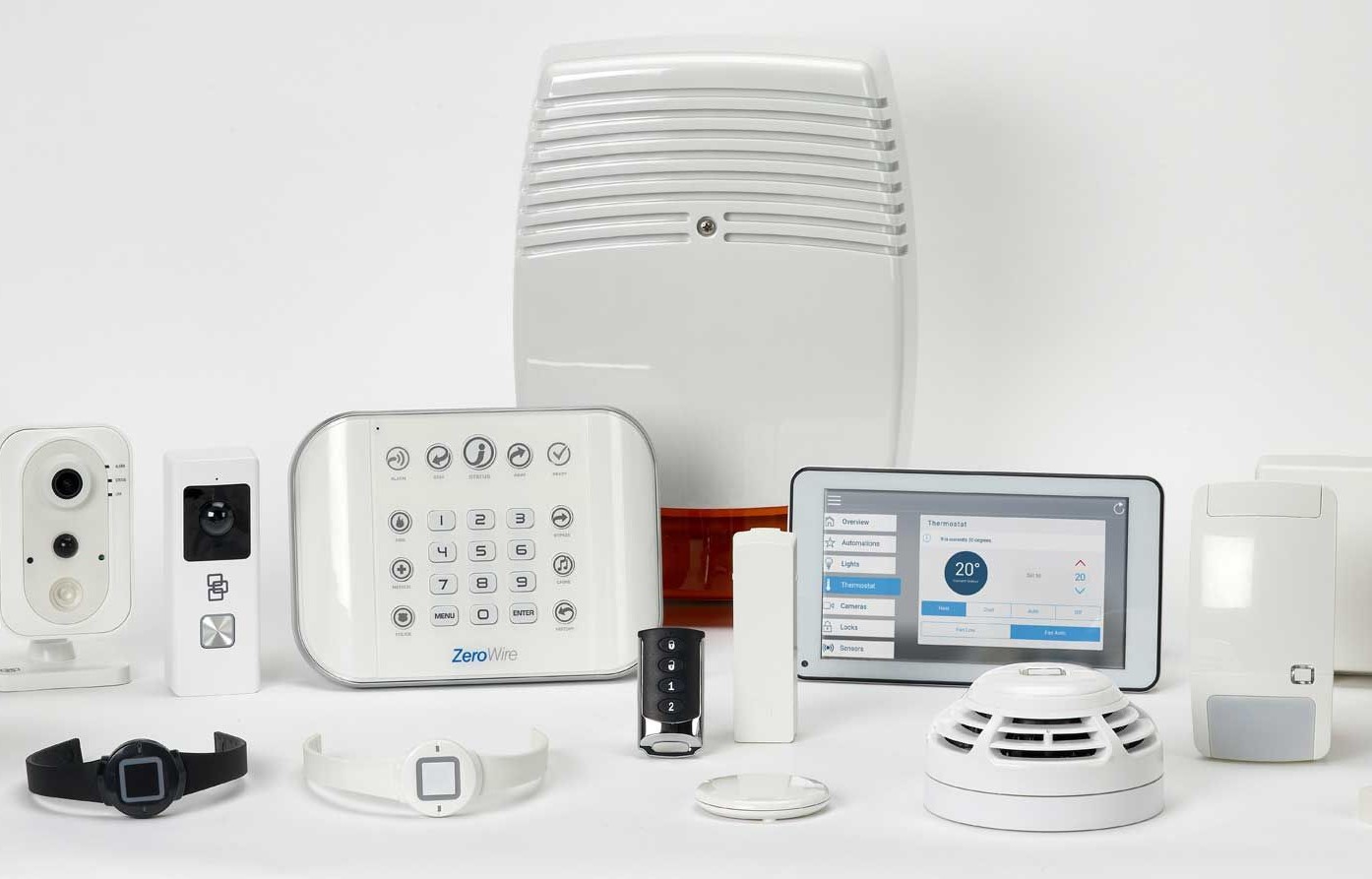Home>Home Security and Surveillance>What Is A Burglar Alarm System
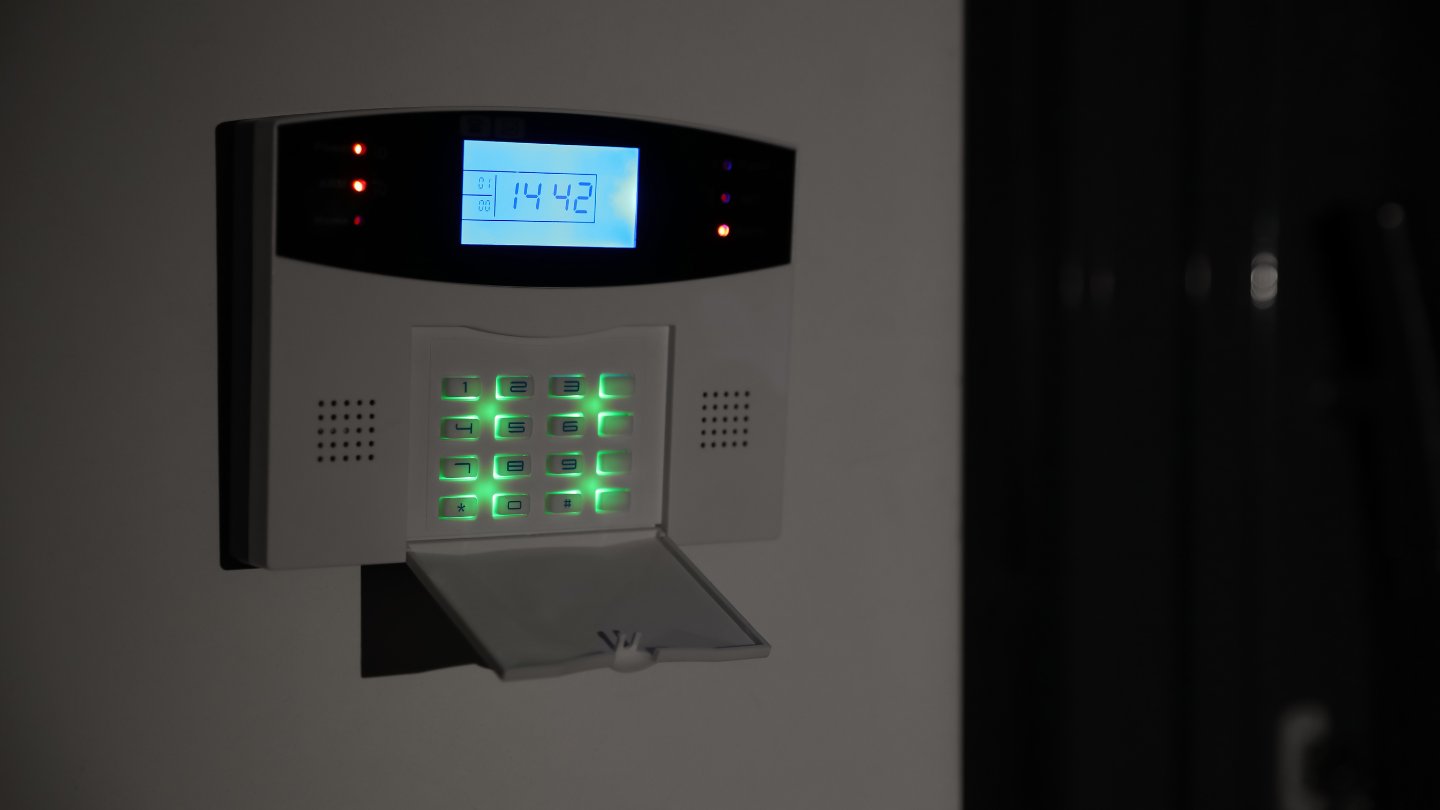

Home Security and Surveillance
What Is A Burglar Alarm System
Modified: March 6, 2024
Protect your home with a reliable burglar alarm system. Discover the benefits of home security and surveillance for peace of mind.
(Many of the links in this article redirect to a specific reviewed product. Your purchase of these products through affiliate links helps to generate commission for Storables.com, at no extra cost. Learn more)
Introduction
Welcome to the world of home security and surveillance! In this increasingly connected and fast-paced world, it is essential to ensure the safety and security of our homes and loved ones. One of the most effective ways to do this is by installing a burglar alarm system.
A burglar alarm system is a comprehensive security solution designed to protect your home from unauthorized access and intrusions. It is a sophisticated network of sensors, detectors, control panels, and alarms that work together to detect and deter potential intruders.
But what exactly does a burglar alarm system do? How does it work? And what are the benefits of having one in your home? In this article, we will explore these questions and more, providing you with a comprehensive understanding of burglar alarm systems and how they can enhance the security of your home.
Whether you live in a high-crime area or simply want to provide peace of mind for your family, a burglar alarm system is an excellent investment. Let’s dive in and uncover the world of home security and surveillance.
Key Takeaways:
- Burglar alarm systems are comprehensive security solutions that protect homes from unauthorized access. They use sensors, alarms, and monitoring to deter intruders and provide peace of mind for homeowners.
- Choosing the right burglar alarm system involves assessing security needs, considering features, and evaluating costs. Proper installation and maintenance are crucial for maximizing the system’s effectiveness.
Read more: What Is Central Burglar Alarm
Definition of a Burglar Alarm System
A burglar alarm system is a comprehensive security system designed to protect your home or property from unauthorized access and intrusion. It consists of a network of interconnected devices and components that work together to detect and alert you to potential threats.
The primary purpose of a burglar alarm system is to deter burglars and intruders from entering your home. The system uses a combination of sensors, detectors, control panels, and alarms to detect unauthorized entry and trigger an alarm, either through loud sirens or by sending alerts to your smartphone or security monitoring company. This immediate response helps to scare off intruders and notify you or the authorities about the breach.
Burglar alarm systems have evolved over the years, thanks to advancements in technology. Modern systems are typically wireless and can be easily integrated with other smart home devices, allowing you to control and monitor your home security remotely.
It’s important to note that burglar alarm systems are not limited to residential properties. They are also commonly used in commercial buildings, businesses, and institutions to protect valuable assets, documents, and equipment.
Ultimately, a burglar alarm system provides an added layer of protection and peace of mind for homeowners and business owners, ensuring that their properties are secure and that any potential threats are detected and addressed.
Components of a Burglar Alarm System
A burglar alarm system consists of various components that work together to provide comprehensive security for your home or property. Understanding these components is essential to grasp how the system functions and how it can protect you from potential intruders. Here are some of the key components of a burglar alarm system:
- Control Panel: The control panel is the central hub of the burglar alarm system. It receives input from various sensors and detectors and processes the information to determine if there is a security breach. It also allows you to arm or disarm the system.
- Keypad or Control Panel Interface: This is where you can interact with the control panel by entering a security code to arm or disarm the system. Some systems also include touchscreen interfaces for convenience.
- Sensors: Sensors are essential components of a burglar alarm system as they detect the presence of intruders. There are different types of sensors available, including door and window sensors, motion sensors, glass break sensors, and vibration sensors.
- Detectors: Detectors enhance the capabilities of a burglar alarm system by detecting specific threats. For example, smoke detectors can alert you to a fire, while carbon monoxide detectors can detect toxic gas. These detectors can be integrated into the burglar alarm system for added safety.
- Alarm: The alarm is the attention-grabbing element of the burglar alarm system. It can take the form of loud sirens, strobe lights, or even voice messages. The purpose of the alarm is to scare off intruders and alert you, your neighbors, or a monitoring center about the breach.
- Monitoring Service: Some burglar alarm systems offer professional monitoring services. When the alarm is triggered, the monitoring center is notified, and they can take appropriate action, such as contacting the authorities or your designated emergency contacts.
- Remote Access: With advancements in technology, many burglar alarm systems now offer remote access capabilities. This allows you to control and monitor your system from anywhere using your smartphone or computer. You can receive real-time alerts, arm or disarm the system, and even view live camera feeds if you have surveillance cameras integrated into your system.
- Backup Power Supply: It’s crucial for a burglar alarm system to have a backup power supply, such as a battery or generator, to ensure that the system continues to function even during a power outage.
These are just some of the key components that make up a burglar alarm system. The combination and configuration of these components will depend on the specific system you choose and the level of security you require for your home or property.
Types of Burglar Alarm Systems
When it comes to choosing a burglar alarm system, you have several options to consider. Each type of system offers different features and functionality to meet your specific security needs. Here are some of the most common types of burglar alarm systems:
- Wired Burglar Alarm Systems: Wired burglar alarm systems have been around for many years and are known for their reliability. These systems use physical wires to connect the sensors, detectors, and control panel. While wired systems require professional installation, they provide a stable connection and are less susceptible to interference. However, they can be more expensive to install and may require drilling holes for the wiring.
- Wireless Burglar Alarm Systems: Wireless burglar alarm systems have gained popularity due to their ease of installation and flexibility. These systems use wireless technology, such as Wi-Fi or RF (Radio Frequency), to connect the components. Wireless systems are typically DIY-friendly and can be installed without the need for professional assistance. They are also more versatile as you can easily add or move sensors without the hassle of wiring. However, wireless systems may be more susceptible to signal interference and require battery replacements for the wireless devices.
- Hybrid Burglar Alarm Systems: Hybrid burglar alarm systems combine the best of both wired and wireless technologies. These systems allow you to connect both wired and wireless components, giving you the benefits of stability and flexibility. For example, you can have wired sensors for doors and windows while using wireless motion detectors. Hybrid systems offer versatility and customization options to meet your specific needs.
- Monitored Burglar Alarm Systems: Monitored burglar alarm systems provide an extra level of security as they are connected to a professional monitoring service. When the alarm is triggered, the monitoring service is alerted, and they can quickly assess the situation and take appropriate action. This can include contacting the authorities or your designated emergency contacts. While monitored systems offer peace of mind, they usually come with a monthly subscription fee.
- Unmonitored Burglar Alarm Systems: Unmonitored burglar alarm systems do not have a professional monitoring service. Instead, when the alarm is triggered, it relies on audible alerts, such as loud sirens, to scare off intruders and notify you or your neighbors of the breach. Unmonitored systems are typically more cost-effective, but they rely on you or someone nearby to respond to the alarm.
- Smart Burglar Alarm Systems: Smart burglar alarm systems are revolutionizing home security. These systems utilize the power of connectivity and automation, allowing you to control and monitor your system from anywhere using your smartphone or computer. Smart systems often integrate with other smart home devices, such as cameras, door locks, and thermostats, offering a seamless and integrated security solution.
Choosing the right type of burglar alarm system depends on your specific requirements, budget, and preferences. It’s essential to evaluate the features and capabilities of each system to determine which one best suits your needs and provides the level of security you desire for your home or property.
How Burglar Alarm Systems Work
Burglar alarm systems utilize a combination of sensors, detectors, control panels, and alarms to detect and deter potential intruders. Understanding how these components work together is crucial to grasp the functionality of a burglar alarm system. Here’s a breakdown of how these systems work:
- Sensors and Detectors: Sensors and detectors play a vital role in a burglar alarm system. They are strategically placed around your home or property to detect any unauthorized entry or suspicious activity. Examples include door and window sensors, motion sensors, glass break sensors, and vibration sensors. When these sensors are triggered, they send a signal to the control panel.
- Control Panel: The control panel is the brain of the burglar alarm system. It processes the signals received from the sensors and determines if there is a security breach. Depending on the configuration, the control panel can be programmed to trigger an alarm immediately or to delay the alarm for a certain period, allowing you to disarm the system if needed.
- Alarms and Alerts: When a security breach is detected, the burglar alarm system initiates an alarm. This can take the form of loud sirens, strobe lights, or even voice messages. The purpose of the alarm is to scare off intruders and attract attention to the potential threat. Additionally, many modern burglar alarm systems offer the option of sending alerts to your smartphone or a security monitoring company.
- Monitoring Services: Some burglar alarm systems can be connected to a professional monitoring service. When the alarm is triggered, the monitoring service is notified. They can assess the situation and take appropriate action, such as contacting the authorities or your designated emergency contacts. This additional layer of protection ensures that potential threats are addressed promptly and efficiently.
- Remote Access and Control: Many modern burglar alarm systems offer remote access and control. This means that you can monitor and control your system from anywhere using your smartphone, tablet, or computer. You can receive real-time alerts, arm or disarm the system, and even view live camera feeds if you have integrated surveillance cameras. Remote access provides convenience and peace of mind, allowing you to stay connected to your home security at all times.
Burglar alarm systems are designed to provide a proactive approach to home security. By detecting and alerting you to potential threats, they act as a deterrent and give you the opportunity to take appropriate action. Whether it’s scaring off intruders with loud alarms or notifying you of a breach through alerts on your phone, these systems help protect your home and provide peace of mind for you and your loved ones.
Read more: What Is Local Burglar Alarm?
Benefits of Installing a Burglar Alarm System
Installing a burglar alarm system offers numerous benefits, providing you with peace of mind and enhanced security for your home or property. Here are some key advantages of having a burglar alarm system:
- Deterrence of Intruders: The mere presence of a visible burglar alarm system can act as a powerful deterrent for potential intruders. Knowing that they are being monitored and that an alarm will sound if they attempt to enter your property can discourage criminals from targeting your home.
- Early Warning System: A burglar alarm system serves as an early warning system. It detects any unauthorized entry or suspicious activity and immediately alerts you or the monitoring service. This allows you to take prompt action, whether it’s contacting the authorities or assessing the situation remotely.
- Protection of Valuables: A burglar alarm system helps protect your valuable possessions, such as jewelry, electronics, and important documents. The quicker the response time to a security breach, the higher the chances of preventing theft or minimizing the loss of valuable items.
- Fire and Gas Detection: Many burglar alarm systems are equipped with additional detectors, such as smoke detectors and carbon monoxide detectors. These detectors can alert you to potential fire hazards or the presence of toxic gases, allowing you to take immediate action and ensure the safety of your household.
- Peace of Mind: Knowing that your home is equipped with a reliable burglar alarm system can offer tremendous peace of mind. Whether you’re away on vacation or simply sleeping soundly at night, having the assurance that your property is protected can alleviate stress and provide a sense of security for you and your family.
- Remote Monitoring: Many modern burglar alarm systems offer remote monitoring capabilities. Through your smartphone or computer, you can monitor your system in real-time, receive instant alerts, and even access live camera feeds if you have integrated surveillance cameras. This remote monitoring allows you to stay connected to your home security, no matter where you are.
- Potential Insurance Benefits: Installing a burglar alarm system may also lead to potential insurance benefits. Some insurance providers offer discounts on home insurance premiums for homeowners who have a burglar alarm system installed. These savings can help offset the cost of the system over time.
By investing in a burglar alarm system, you are taking proactive steps to protect your home, your belongings, and most importantly, your loved ones. The benefits of increased security, peace of mind, and the potential for insurance savings make a burglar alarm system an essential component of a comprehensive home security plan.
Choosing the Right Burglar Alarm System for Your Needs
When it comes to choosing a burglar alarm system, it’s essential to select the right one that suits your specific security needs and requirements. Here are some factors to consider when choosing the right burglar alarm system:
- Assess Your Security Needs: Start by assessing your security needs and the level of protection you require. Consider factors such as the size and layout of your home, the number of entry points, and any specific vulnerabilities that need to be addressed.
- Type of System: Determine which type of burglar alarm system best fits your needs. Would a wired, wireless, or hybrid system be more suitable? Consider the pros and cons of each type, including installation requirements, flexibility, and reliability.
- Features and Functionality: Consider the features and functionality you require in a burglar alarm system. Do you need additional detectors, such as smoke or carbon monoxide detectors? Do you want remote access and control capabilities? Make a list of the features that are important to you and prioritize them accordingly.
- Budget: Establish a budget for your burglar alarm system. Consider the upfront costs of the equipment, installation fees (if applicable), and any ongoing monthly monitoring fees. Remember that investing in a reliable and robust system is a long-term investment in your home’s security.
- Professional Installation vs. DIY: Determine whether you prefer professional installation or if you are comfortable with a do-it-yourself (DIY) setup. Keep in mind that some systems may require professional installation to ensure proper integration and functionality.
- Research and Compare Options: Take the time to research and compare different burglar alarm systems. Read customer reviews, check ratings, and consult with security professionals if needed. Look for reputable brands and companies that have a track record in providing reliable and quality systems.
- Alarm Monitoring: Decide whether you want a system with professional alarm monitoring or if you prefer a self-monitored system. Professional monitoring offers an extra layer of security and peace of mind, but it may come with additional monthly fees.
- Consider Scalability: Think about future needs and scalability. Will the system allow you to add additional sensors or devices in the future if needed? Consider your long-term plans and choose a system that can adapt to your changing security requirements.
- Consult with Experts: If you’re uncertain about which burglar alarm system is best for you, don’t hesitate to consult with security experts. They can provide guidance based on your specific needs and help you make an informed decision.
Ultimately, choosing the right burglar alarm system requires careful consideration of your security needs, budget, and desired features and functionality. By taking the time to evaluate your options and selecting a system that meets these criteria, you can enhance the overall security of your home or property and gain peace of mind knowing that you have taken proactive steps to protect what matters most.
Installation and Maintenance of a Burglar Alarm System
Proper installation and regular maintenance are essential for ensuring the effectiveness and reliability of your burglar alarm system. Here are some key points to consider regarding the installation and maintenance of your system:
Installation:
Professional Installation: Some burglar alarm systems require professional installation to ensure proper integration and functionality. Professional installation ensures that all components are correctly installed, sensors are strategically placed, and the system is properly connected to the control panel. Professional installers have the expertise to optimize the system’s performance and troubleshoot any potential issues.
DIY Installation: If you opt for a DIY installation, carefully follow the manufacturer’s instructions and guidelines. Make sure to read the manual thoroughly before starting the installation process. Take note of any specific requirements or recommendations, such as sensor placement and wiring connections. DIY installation can be more cost-effective, but it requires attention to detail and patience to ensure everything is set up correctly.
Testing: After the installation is complete, it is crucial to test the system to ensure that all components are functioning correctly. Test each sensor and detector to confirm that they are properly connected to the control panel and triggering the alarms or alerts as intended. Regular testing should also be done to ensure that the system is in optimal working condition.
Read more: What Is A Direct Burglar Alarm?
Maintenance:
Regular Inspections: Perform regular inspections of the system to ensure that all components are in good working order. Check the batteries in wireless sensors and detectors and replace them as needed. Inspect wiring connections and contact your alarm service provider if there are any signs of damage or wear and tear. Regular inspections help identify and address potential issues before they become major problems.
Keeping Sensors Clean: Dust, dirt, and debris can interfere with the proper functioning of sensors and detectors. Regularly clean sensors and detectors to remove any buildup that may affect their performance. Follow the manufacturer’s instructions for cleaning to avoid damaging the components.
Software Updates: If your burglar alarm system includes software or firmware, make sure to keep it updated. Software updates often include important bug fixes and security patches that help maintain the system’s integrity and effectiveness. Check the manufacturer’s website or contact their support team for any available updates.
Responding to Faults or False Alarms: Be prepared to respond promptly to any faults or false alarms that may occur. Familiarize yourself with the system’s user manual to understand how to troubleshoot common issues. Contact your alarm service provider if you encounter any persistent problems that you are unable to resolve on your own.
Regular Service and Maintenance: Consider signing up for regular service and maintenance checks provided by professionals. These scheduled inspections and maintenance visits ensure that your burglar alarm system remains in optimal condition. Service technicians can detect and address any potential issues before they compromise the system’s functionality.
Remember, the effectiveness of your burglar alarm system relies on proper installation and regular maintenance. By taking the time to set up the system correctly and maintaining it diligently, you can maximize its performance and provide long-term security for your home or property.
Common Features and Options of Burglar Alarm Systems
Burglar alarm systems come with a variety of features and options that allow you to customize the level of security and functionality based on your specific needs. Understanding these common features and options will help you choose the right system for your home or property. Here are some of the most common ones:
Basic Features:
Control Panel: The control panel serves as the command center of the burglar alarm system. It allows you to arm or disarm the system and provides indicators for system status.
Keypad or Control Panel Interface: The keypad or control panel interface is where you interact with the control panel. You enter a security code or use a key fob to arm or disarm the system.
Sensors: Sensors are the primary components that detect unauthorized entry or movement. Door and window sensors, motion sensors, and glass break sensors are common examples.
Alarms and Alerts: When a security breach is detected, the system triggers an alarm, typically in the form of loud sirens, strobe lights, or voice messages. Some systems also send alerts to your smartphone or a monitoring center.
Advanced Features and Options:
Wireless Connectivity: Many modern burglar alarm systems offer wireless connectivity, allowing for easier installation and flexibility in sensor placement.
Remote Access and Control: With remote access, you can control and monitor your burglar alarm system from anywhere using your smartphone or computer. This includes arming or disarming the system, receiving real-time alerts, and accessing live camera feeds (if integrated).
Integration with Smart Home Devices: Some burglar alarm systems integrate with other smart home devices, such as cameras, door locks, and lighting systems. This integration provides a seamless and integrated security solution.
Video Surveillance: Many burglar alarm systems offer the option to integrate video surveillance cameras. This allows you to monitor your property visually and record footage for future reference.
Environmental Detectors: Some systems include environmental detectors like smoke detectors and carbon monoxide detectors. These detectors provide an additional layer of protection by alerting you to potential fire hazards or toxic gas presence.
Two-Way Voice Communication: Two-way voice communication allows you to communicate with a monitoring center or listen to what is happening at your property through the control panel. This feature provides an added level of security and reassurance.
Professional Monitoring: Burglar alarm systems can be connected to professional monitoring services. When an alarm is triggered, the monitoring service is notified and can take appropriate action, such as contacting the authorities or your designated emergency contacts.
Home Automation Integration: Some systems integrate with home automation platforms, allowing you to control various aspects of your home, such as lighting, temperature, and door locks, through a single interface.
These are just a few common features and options available in burglar alarm systems. When choosing a system, consider the features that align with your needs and budget. Customize your system to create a security solution that provides the peace of mind and protection you desire for your home or property.
Read more: What Are UL Burglar Alarm Inspections
Cost of Burglar Alarm Systems
The cost of a burglar alarm system can vary depending on various factors such as the type of system, the features and options included, the number of sensors and detectors required, and whether professional installation is needed. Here’s a breakdown of the typical costs associated with burglar alarm systems:
Equipment Costs:
The cost of the actual equipment for a burglar alarm system can range from a few hundred dollars to several thousand dollars. Wired systems generally have lower equipment costs compared to wireless systems. Basic systems that include a control panel, keypad interface, door and window sensors, and an alarm can start around $300-$500. More advanced systems with additional features like video surveillance, remote access, and home automation integration can cost upwards of $1,000 or more.
Installation Costs:
The installation costs can vary depending on whether you choose professional installation or opt for a do-it-yourself (DIY) approach. Professional installation can range from $100 to $500 or more, depending on the complexity of the system and the size of your property. DIY installation may not have additional costs for installation, but it requires your time and effort to set up the system properly.
Monitoring Costs:
If you choose to have your burglar alarm system monitored by a professional monitoring service, there will be recurring monthly or annual monitoring costs. These costs typically range from $20 to $50 per month, depending on the level of monitoring services and features provided. Some monitoring companies offer different pricing tiers with varying levels of service, so it’s important to compare options and choose a monitoring plan that suits your needs and budget.
Read more: What To Do If A Burglar Alarm Goes Off
Maintenance and Service Costs:
Regular maintenance and service of your burglar alarm system may come with additional costs. Some alarm service providers offer service plans or maintenance contracts that cover routine inspections, software updates, and repairs. The costs for these plans can range from $100 to $300 per year, depending on the level of coverage and services included. These plans can help ensure that your system remains in optimal working condition and reduce the chances of any false alarms or malfunctions.
It’s important to note that while there are upfront costs associated with installing a burglar alarm system, it is an investment in the security and protection of your home or property. Consider the value it brings in terms of peace of mind, deterrence of intruders, and potential insurance savings due to increased security. Take the time to research and compare different systems and service providers to find the best balance between cost and quality that fits your specific security needs and budget.
When choosing a burglar alarm system, look for one with 24/7 monitoring, motion sensors, and a loud siren. It’s also important to consider professional installation for optimal security.
Conclusion
In today’s world, where ensuring the safety and security of our homes and loved ones is paramount, installing a burglar alarm system is a wise investment. A burglar alarm system acts as a powerful deterrent, detects unauthorized entry, and alerts you or a monitoring service to potential threats. It provides peace of mind and enhances the overall security of your home or property.
By understanding the definition, components, types, and functionality of burglar alarm systems, you can make an informed decision about choosing the right system for your needs. Consider factors such as your security requirements, budget, desired features, and installation options. Whether you opt for a wired, wireless, or hybrid system, or choose professional installation or DIY, there’s a burglar alarm system out there that caters to your specific preferences.
The benefits of installing a burglar alarm system are numerous. Not only does it deter intruders and provide an early warning system, but it also protects your valuable possessions and provides peace of mind for you and your family. With advancements in technology, many burglar alarm systems offer remote access, integration with smart home devices, and professional monitoring services, allowing you to stay connected and in control of your home security, no matter where you are.
When it comes to installation and maintenance, consider professional installation for optimal system integration and functionality. Regular inspections, cleaning of sensors, and software updates are critical for the ongoing performance of your burglar alarm system. Additionally, considering professional service and maintenance checks can help ensure that your system remains in peak condition over time.
While there are costs involved in installing and maintaining a burglar alarm system, the value it provides in terms of security and peace of mind is undeniable. By investing in a reliable system, you are taking proactive steps to protect your home and loved ones.
In conclusion, a burglar alarm system is an essential component of a comprehensive home security plan. Its ability to deter intruders, provide early warning, and offer remote access and monitoring capabilities provides a significant boost to the security of your home or property. Take the time to research and choose the right system for your specific needs, ensuring that you and your loved ones can live safely and securely.
Frequently Asked Questions about What Is A Burglar Alarm System
Was this page helpful?
At Storables.com, we guarantee accurate and reliable information. Our content, validated by Expert Board Contributors, is crafted following stringent Editorial Policies. We're committed to providing you with well-researched, expert-backed insights for all your informational needs.
